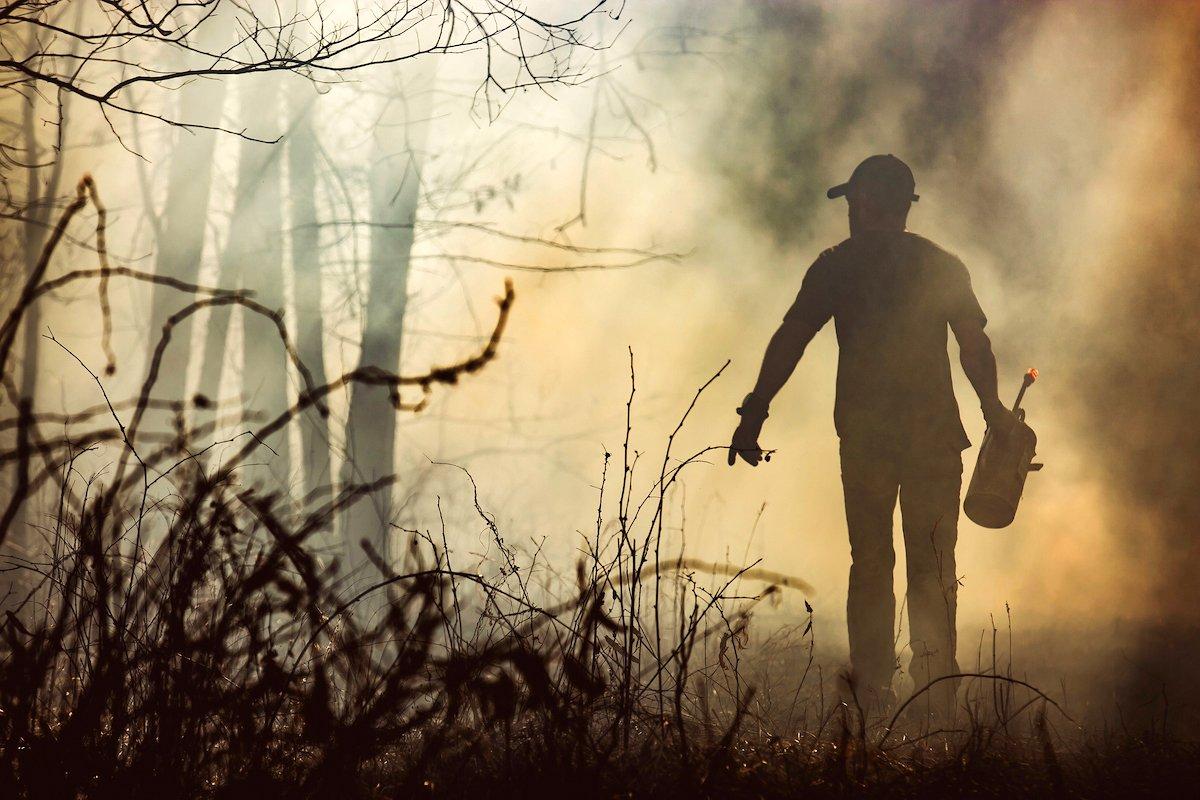Do You Do Any of These Things?
Landowners or hunters interested in improving their land for wildlife will find creating openings or planting food plots to be the most effective way. Unfortunately, it is also the most costly. And of those costs, brush control is the largest, most continuous expense. Despite this concern, landowners have three brush-control alternatives -- all which can be employed for varying costs and with varying benefits. These alternatives are mechanical methods, like roll drum chopping or mowing, prescribed burning or applying herbicides.
1. Use Muscle and Grit
Using a roll-drum chopper or mowing to control brush is a common, yet costly method. A recent study reported that a single pass with a roll-drum chopper costs an average of $87 per acre. Mowing costs vary and can be as high as $50 to $60 per acre. Some areas require chopping or mowing every year or two, so these costs can really add up. In addition, these methods don't always encourage the growth of desirable food plants and may require you to plant supplemental food plots. Another similar option is to till and/or disk up the ground to restart the growing cycle, vegetation size depending.
Don't Miss: Why Reclaimed Coal Mines Make the Ultimate Deer Habitat
2. Fight with Fire
Controlled burning offers another alternative. A good burn can result in the growth of more native plant species and creates more brood habitat for turkey poults and other birds and animals than expensive work with heavy equipment. Burning costs vary widely; from about $5 per acre if you do the site preparation and burning yourself, to more than $25 per acre if burning is done by a private contractor.
Burning is an excellent management practice in terms of financial cost and generating more beneficial plants. Despite popular, yet misguided notions, many plant species have evolved with fire and respond well to its occurrence. Not only does burning reduce the accumulation of dead plant material and recycle nutrients but it also stimulates vigorous plant growth along with fruit and seed production.
Although burning achieves only temporary brush control and must be done every few years, once a plan is in place, the most difficult part of burning is finding a day with the right weather conditions. Additionally, in some areas, burning has become less feasible because of liability and air-quality issues.
Don't Miss: 8 Land Improvements That Attract More Whitetails
3. Chemical Warfare
If burning is not feasible, the application of herbicides is another alternative for vegetation control and enhancing the growth of native plants. A popular choice is a selective herbicide such as Arsenal with the active ingredient imazapyr. Specifically recommended for establishing and maintaining wildlife openings, this selective herbicide controls unwanted hardwood brush and permits beneficial food plants for wildlife to prosper. Combined with periodic prescribed fire, high-quality wildlife habitat can be created and maintained.
Many legumes, like lespedeza and partridge pea, tolerate the herbicide and continue to grow. Other plants such as morning glory and wild geranium quickly regenerate after its use. Seed-bearing plants produce heavier and more nutritious seeds in the absence of competitive brush, and flowering plants are able to thrive, attracting an abundance of insects, which provide food for many bird species -- including wild turkey poults.
The cost per acre of using herbicide depends on how dense the brush is. A moderate amount of brush -- about 500 rootstocks per acre -- requires 3 to 5 gallons of spray, representing about $20 of herbicide. A one-time application can last seven to 10 years, making this a very cost-effective choice. In addition, because you're encouraging the growth of native food plants, you'll spend less on supplemental food plots. Unlike prescribed fire, however, herbicides will not reduce the amount of dead wood (a natural fuel for wild fires) in the forest, nor recycle nutrients in the soil.
Don't Miss: 6 Things That Attract Big Bucks
Editor's Note: This was originally published December 11, 2008.
Are you a hunter wanting to learn how to accomplish your goals? Check out our stories, videos and hard-hitting how-to's on food plots and land management.








